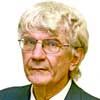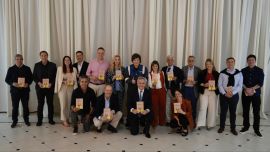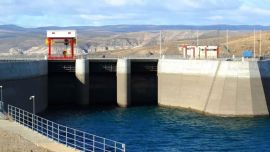Today’s column has more than one reason not to delve too deeply into the lists of candidates for the September 12 PASO primaries formally defined last weekend – firstly, other political pundits have had a full week to publish their own take and secondly, it seems to make more sense to take a post-PASO look at names once their presence on November 14 midterm ballots has been confirmed, rather than waste efforts sifting through hopefuls who will end up on also-ran lists competing within alliances or parties or running for groupings failing to clear the 1.5 percent PASO threshold. Not that these unique primaries in Covid-19 times (reflected by the prominence of past and present health ministers and scientists in lists) lack interest but this column’s brief is comparison with the past, not speculation about the future.
In contrast to the thousands of names listed last Saturday, the number of previous pre-midterm PASO primaries is mercifully short – just two, in 2013 and 2017. The PASO institution itself, as enshrined by Law 26,571 in late 2009, is famously the result of the midterms earlier that year – then ex-president Néstor Kirchner running for Congress was pipped by just 2.5 percent by the Unión-PRO list of Francisco de Narváez in his main stronghold of Buenos Aires Province, when Martín Sabbatella’s allied but separate Nuevo Encuentro list (which would have been merged into the mainstream by the PASO mechanism) polled 5.6 percent. Plenty of rhetoric about democratising political representation (subsequently contradicted by the prevailing insistence on single lists) and restoring transparency to politics but the electoral miscalculation described above was the exclusive reason.
After the first PASO primaries in 2011 had taken all suspense out of the general elections by already handing the recently widowed President Cristina Fernández de Kirchner an absolute majority, the first pre-midterm PASO primaries were held in 2013. If the real aim of creating the PASO mechanism had been to prevent the history of the 2009 humiliation from repeating itself, it was a failure – once more the Victory Front failed to live up to its name, going down to defeat by a margin of almost five percent in its prized bastion of Buenos Aires Province at the hands of another dissident Peronist list, the Renewal Front headed by none other than Sergio Massa, today the junior partner of the ruling triumvirate and Congress Speaker.
That stinging humiliation has led to that year going down in the folk memory as a government defeat. Thus what today’s centrefold interviewee Miguel Angel Pichetto, Mauricio Macri’s 2019 running-mate (and himself re-elected to his third and final term as senator for Río Negro in 2013) has to say about the preceding election: “In 2009 Kirchnerism won practically nationwide while losing by a tiny percentage of votes [in Buenos Aires Province] with Néstor Kirchner at the head, seeing that election as a defeat” could be applied almost word for word to 2013 (apart from Néstor Kirchner’s absence). Yet this idea of a government triumph overlooked due to the eternal obsession with Buenos Aires Province is not quite exact either. The Victory Front only polled 26.3 percent of the vote (even if this doubled any other list in a highly fragmented opposition) and only won under that label in seven of the 23 provinces, even if winning in around half with allies.
The writing was thus already on the wall against any fourth Kirchnerite term in that 2013 PASO primary. Almost all of the opposition fragments from that primary had teamed up under Macri by 2015 apart from Massa’s Renewal Front, which was offering tacit support. The PASO primaries in that year nevertheless seemed to make the election of Peronist standard-bearer Daniel Scioli almost a done deal by giving him a lead of nearly 15 percent (almost the same PASO margin which was to doom Macri four years later) but that huge advantage dramatically shrank to three points in the first round of the elections with Scioli’s percentage actually shrinking from the primary. Macri duly won the run-off and took office at the end of the year, thus setting our stage for the 2017 PASO primaries.
These primaries were a resounding success for the government in the only year of Macri’s four-year term to register growth – the first midterm win for a party in power since 2005 and only the fourth since the return of democracy in 1983. Cambiemos won in 10 of the 23 provinces but that haul took in four of Argentina’s five most populous districts, including the big one of Buenos Aires province – yet another defeat for Peronism in that stronghold where it is supposedly invincible, as populist as it is populous. But that success raises the bar this year for the coalition now calling itself simply Juntos. Economic woes and the ravages of the pandemic leave the Frente de Todos administration looking very vulnerable but a strong swing will be needed to replicate such 2017 triumphs as 15 of the 35 lower house seats in Buenos Aires Province where the current vice-president and two-term ex-president was elected as the minority senator.
Such were the broad lines of the two previous pre-midterm PASO primaries – any comparison with the current stage of this year’s primaries, namely the definition of lists and candidacies as from last Saturday, runs into the same problem of myriad names even if here the wheat can be separated from the chaff with the results known. Yet the widespread anxieties about Argentina’s future extend far beyond PASO results or even the coronavirus pandemic while in the here and now most people would probably prefer to follow the Tokyo Olympics.






















Comments